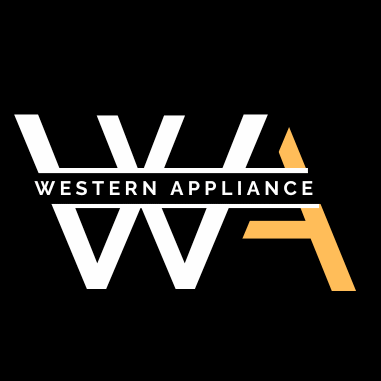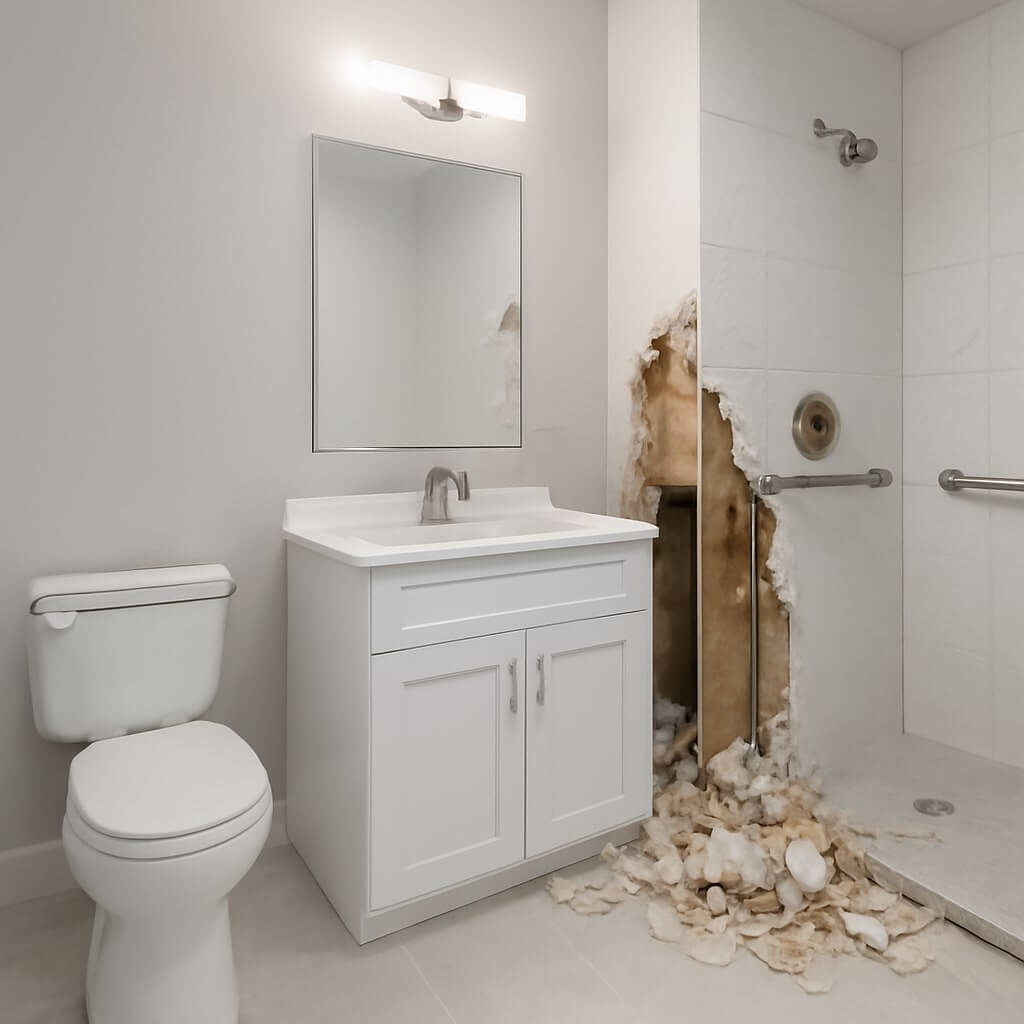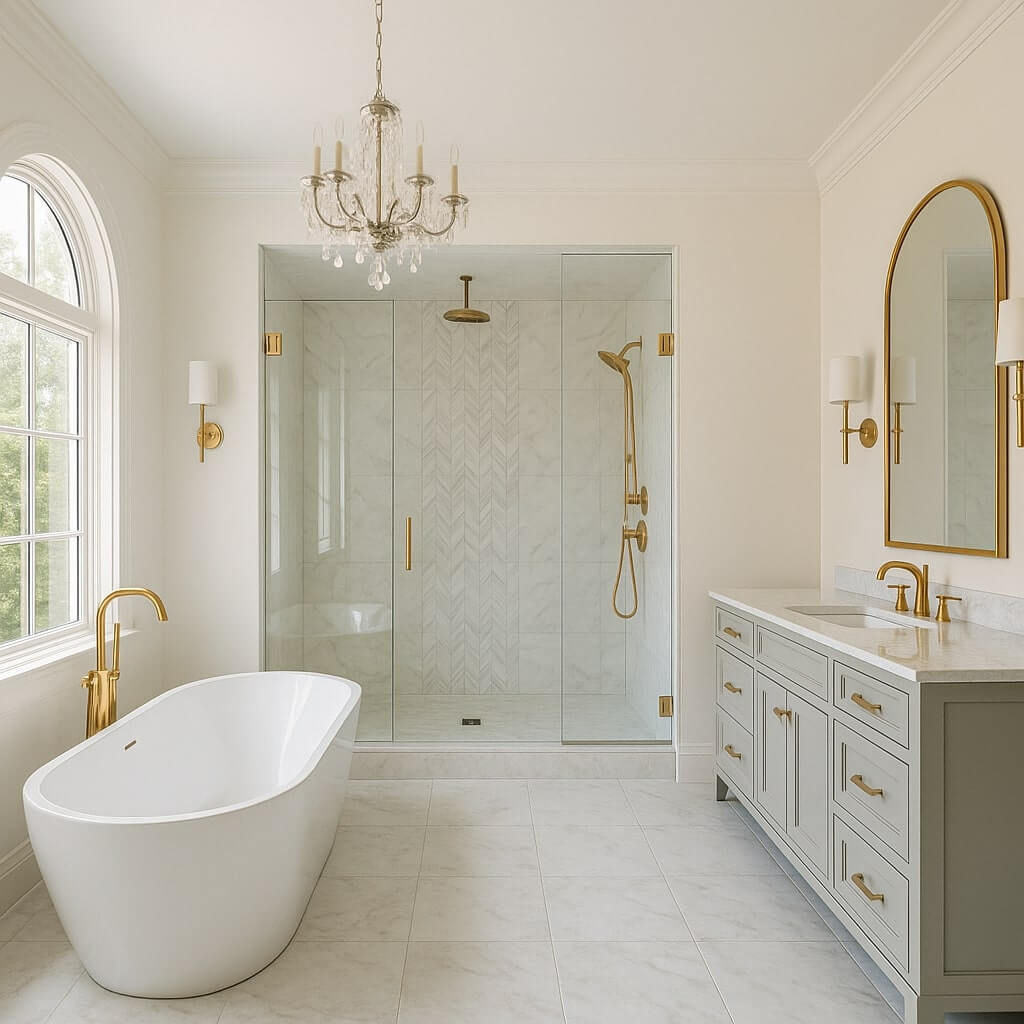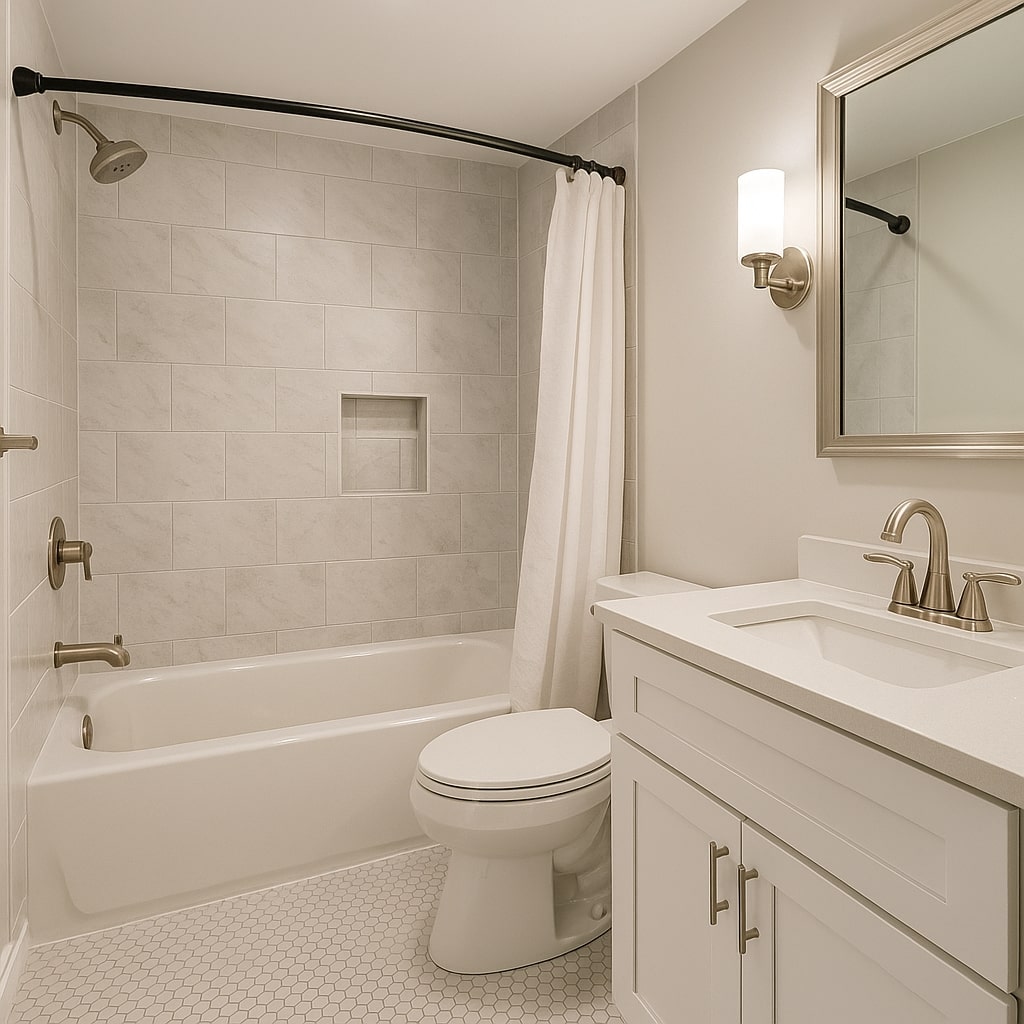When considering bathroom renovations, you might wonder if Medicare can help cover the costs. While Medicare focuses primarily on medical necessities, it does have specific guidelines regarding home modifications that improve safety and accessibility. However, the coverage is limited and may not include general remodeling expenses. Understanding what’s covered and what isn’t is essential, especially if you’re planning significant changes for better functionality or safety. Let’s explore the details further.
Key Takeaways
- Medicare does not cover general bathroom remodeling costs, focusing only on medically necessary modifications for safety and accessibility.
- Specific home modifications like grab bars and wheelchair ramps may be covered if deemed medically necessary.
- Bathroom renovations aimed solely at aesthetics or improvements without medical justification are not eligible for Medicare coverage.
- Alternative funding options, such as home equity loans and government grants, can help manage bathroom modification expenses.
- Researching local government programs and non-profit organizations can uncover potential financial assistance for necessary home modifications.
Understanding Medicare Coverage Basics
While maneuvering through the complexities of Medicare coverage, it’s essential to understand its core principles.
First, you need to grasp Medicare enrollment, which occurs during specific periods, like your 65th birthday or when you qualify due to disability. Knowing when to enroll can greatly affect your coverage eligibility.
Medicare offers various plans, including Part A for hospital services and Part B for outpatient care, each with distinct eligibility requirements.
Understanding these fundamentals helps you navigate your options effectively, ensuring you make informed decisions about your healthcare needs and any potential modifications to your living environment that may arise later.
What Medicare Covers Related to Home Modifications
When considering home modifications to enhance safety and accessibility, it’s essential to understand what Medicare covers in this area.
Medicare primarily supports changes that promote home safety and senior independence, including:
- Grab bars installed in bathrooms for stability.
- Wheelchair ramps to improve access to your home.
- Elevated toilets that ease sitting and standing.
- Wide doorways to accommodate mobility devices.
These modifications aim to reduce fall risks and facilitate daily activities.
Always consult your Medicare plan to determine specific coverage details, ensuring your home remains a safe haven for your independence.
Limitations of Medicare in Home Renovations
Although Medicare provides coverage for certain home modifications, its limitations can greatly impact your renovation plans.
Primarily, Medicare doesn’t cover general home renovations or upgrades that aren’t deemed medically necessary. This means that while you might need a safer bathroom, the costs associated with aesthetic improvements or non-essential features won’t be reimbursed.
Additionally, Medicare’s focus on specific medical needs can limit your options for thorough renovations. You’ll need to carefully evaluate what modifications qualify under Medicare limitations to avoid unexpected renovation costs, ensuring your plans align with their strict criteria for coverage.
Key Bathroom Modifications for Seniors
When considering bathroom modifications for seniors, installing grab bars can greatly enhance safety and accessibility.
Additionally, walk-in tubs offer benefits such as easier entry and reduced risk of slips.
These changes not only improve independence but also provide peace of mind in daily routines.
Grab Bars Installation
Installing grab bars in your bathroom can greatly enhance safety and accessibility for seniors.
The installation process is straightforward and involves several key steps:
- Choose the right location – Install grab bars near the toilet, shower, and tub for maximum support.
- Select sturdy materials – Opt for grab bars made of stainless steel or other durable materials.
- Confirm proper height – Position the bars at a height that’s comfortable for the user.
- Securely fasten – Use wall anchors and screws to guarantee the bars are firmly attached.
With these steps, you’ll provide essential support and peace of mind for seniors.
Walk-in Tub Benefits
Walk-in tubs represent a notable advancement in bathroom safety and comfort for seniors. One of the primary walk-in tub advantages is the low entry threshold, which minimizes the risk of slips and falls.
Additionally, many models feature built-in seating and grab bars for added stability. You’ll find various walk-in tub options, including those with hydrotherapy jets, which can soothe aching muscles and improve circulation.
The easy-to-use controls and anti-scald features enhance usability. Overall, investing in a walk-in tub can considerably enhance your bathing experience, providing a safer and more comfortable environment tailored to your needs.
Alternative Funding Options for Bathroom Remodeling
While Medicare may not cover bathroom remodeling costs, various alternative funding options can help you manage these expenses effectively.
Consider these funding sources during your budget planning:
- Home Equity Loan – Leverage your home’s value for renovation costs.
- Personal Savings – Allocate funds from your savings account to cover expenses.
- Government Grants – Research local programs offering financial assistance for home modifications.
- Non-Profit Organizations – Seek assistance from groups dedicated to helping individuals with disabilities or aging in place.
These strategies can provide you the financial support needed to enhance your bathroom’s safety and accessibility.
Assessing the Need for Bathroom Modifications
When evaluating the need for bathroom modifications, you should prioritize safety considerations and accessibility requirements.
Evaluate potential hazards, such as slippery surfaces and inadequate lighting, that might pose risks.
Additionally, consider whether your current bathroom setup meets your mobility needs or if adjustments could enhance your independence and comfort.
Safety Considerations
Evaluating safety factors for bathroom modifications is essential, especially if you or a loved one has mobility challenges.
Incorporating safety features can greatly enhance fall prevention. Here are four important aspects to evaluate:
- Non-slip flooring to reduce the risk of falls.
- Grab bars installed near toilets and tubs for support.
- Raised toilet seats to aid in sitting and standing.
- Walk-in tubs or showers for easier access without climbing over barriers.
These modifications not only improve safety but also promote independence, ensuring a secure environment in your bathroom.
Prioritizing these changes can greatly enhance daily living quality.
Accessibility Requirements
Evaluating the need for bathroom modifications is essential, particularly if you or someone you care for has specific accessibility challenges.
Appraising mobility aids, such as grab bars and shower chairs, can greatly enhance bathroom safety. Consider the layout and size of the space—wider doorways and lower countertops might be necessary for wheelchair access.
Additionally, non-slip flooring and well-placed lighting can prevent falls and improve usability. By identifying these requirements, you’ll guarantee that the bathroom meets the unique needs of its users, promoting independence and reducing the risk of accidents.
Ultimately, thoughtful modifications create a safer and more accessible environment.
Working With Healthcare Providers for Support
Although maneuvering Medicare coverage can be complex, collaborating with your healthcare providers is essential for securing support for bathroom remodeling costs.
Effective healthcare collaboration and clear provider communication can greatly enhance your chances of obtaining coverage.
Collaborating effectively with healthcare providers can significantly improve your likelihood of securing necessary coverage.
Consider the following steps:
- Schedule a consultation to discuss your specific needs.
- Gather documentation of medical necessity for remodeling.
- Request your provider to write a supportive letter detailing required modifications.
- Follow up regularly to verify your claims are processed.
Resources for Home Modifications and Accessibility Grants
When considering bathroom remodeling for improved accessibility, it’s essential to explore various resources available for home modifications and accessibility grants.
Start by researching local and state programs that offer funding resources specifically for home improvements. Many non-profits and government agencies provide grant applications for eligible homeowners. These grants can greatly ease the financial burden of modifications.
Additionally, check with organizations like the Department of Housing and Urban Development (HUD) or the National Council on Aging (NCOA) for potential funding options.
Conclusion
In conclusion, while Medicare doesn’t cover general bathroom remodeling costs, it does provide coverage for specific modifications that enhance safety and accessibility. Understanding these limitations is vital as you plan your renovations. Explore alternative funding options, such as home equity loans or government grants, to ease financial burdens. Evaluating your needs and collaborating with healthcare providers can further guarantee that your bathroom modifications align with your health and safety requirements.




